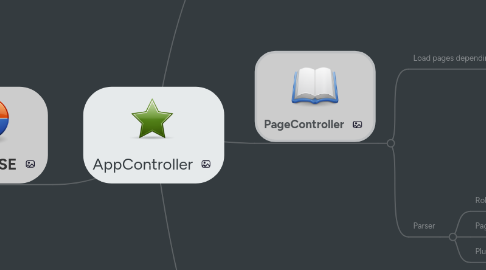
1. User
1.1. Hierarchy
1.1.1. Owner (Hoster / Server owner)
1.1.1.1. Administrator
1.1.1.1.1. (configurable levels via roles)
1.2. Login
1.2.1. Choose Server
1.2.1.1. Server Details
1.2.1.2. Server Type
2. PageController
2.1. Load pages depending on server type
2.1.1. Example Page
2.1.1.1. Views
2.1.1.1.1. Pages
2.1.1.1.2. Other
2.1.1.1.3. Elements
2.1.1.2. Controllers
2.1.1.2.1. generate content with database and server calls, using the provided connection infos and the respective call for a server type
2.1.1.3. Webroot
2.1.1.3.1. plugin.xml
2.1.1.3.2. img
2.1.1.3.3. js
2.1.1.3.4. css
2.1.2. Server Component
2.1.2.1. This is the communicator between the panel and the server
2.1.2.1.1. After loading it as a component, simply do $this->servertype('method')
2.2. Parser
2.2.1. Role Nodes
2.2.2. Pages / Other
2.2.3. Plugin config
3. Roles
3.1. Role Editor
3.1.1. Parse all view files for the specified server type for role nodes, display them nicely
3.1.1.1. Parse all subpages for $element_access variables. Generate an array of permission nodes for each page
3.2. Role Datastructure
3.2.1. When a dev creates a page, he defines elements with a role. Each of these elements is uniquely accessible. A role node is defined by the following structure:
3.2.1.1. SERVERTYPE/PAGE/SUBPAGE/ELEMENT
3.2.1.1.1. When creating roles, you create boolean MySql entries. If a role group has access to a specific element, it is stored, if not stored, no access
3.2.1.1.2. Alternatively, there is the "SuperUser" Group, which automatically grants all rights to all elements
3.2.1.2. <?php if ($element_access['element_unique_id'] { //element } ?>

